Wassy to Chevillon
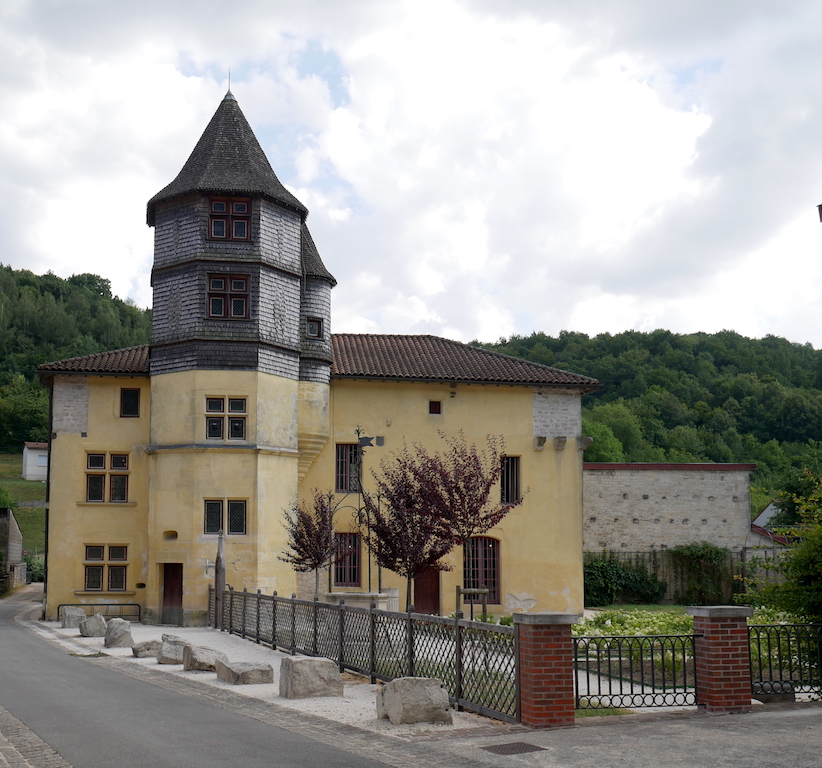
Grand Est
4. Wassy to Chevillon
Easy
4h30
16,9km
+252m
-253m
Step
Embed this item to access it offline
Some place names bear witness to an important iron industry in past centuries. In Brousseval, metallurgy is still present as in many other sites in Haute-Marne. The decline of this industry began after the end of the First World War with a neighbouring competitor, the Lorraine iron and steel industry, which integrated French production. Today some foundries have adapted to market demand while others have closed down.
5 points of interest
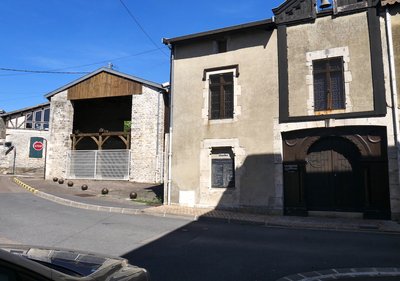
La grange du Massacre de Wassy en 1562. L’entrée du temple au premier plan. - Amis saint Colomban HistoricalThe Massacre of Wassy (16th century)
On 1 March 1562, the Duke of Guise, Lord of Wassy, massacred about fifty Protestants and left 150 wounded in a barn where the Protestants had taken refuge. It was the beginning of the religious wars.
Today the barn is a place of meditation as well as the Temple nearby.
More information Wikipedia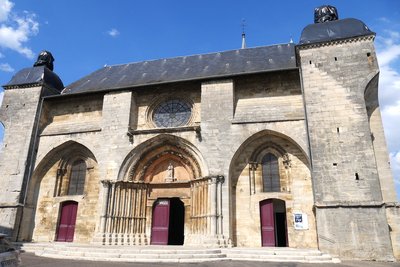
Église Notre-Dame de Wassy - Amis saint Colomban TouristNotre-Dame Church in Wassy
Built in the 13th century, the church has kept many Romanesque architectural elements. It will know later contributions in particular the addition of chapels in the Middle Ages. The church originally consisted of three semicircular apses, the three entrance portals opened onto three naves. The side chapels are later and were built between the 15th and 18th centuries. The building was destroyed in the 16th century, necessitating the reconstruction of the central apse and the southern apse with flat chevets. The façade was covered with a roof in the 17th century. Louis Le Bé organ from the 17th century. Stained glass windows from the 15th-20th centuries.
Halles et Théâtre de Wassy à droite - Amis saint Colomban HistoricalHistory of Wassy
Marie Stuart, born on December 8, 1542, queen of Scotland then queen of France, wife of François II, received in gift to enjoy all her life, the incomes of the lands of Wassy, Chaumont and Saint-Dizier but no document can attest that she stayed in Wassy, even if the legend claims that she invented there the recipe of the "boxes of Wassy".
In the 19th century, Camille and Paul Claudel lived in Wassy for two years (their father was a mortgage trustee there). The first work of Camille Claudel, a head of Bismarck, was carried out in Wassy, the work is still visible in the town hall. Camille Saint-Saëns came there many times to his grandmother's house (as a small child, he complained to his grandmother because her kettle "sang fake"!...).
On June 7, 1892, the President of the Republic Sadi Carnot, (back from Lunéville, Nancy and Toul, by presidential train) came to inaugurate the magnificent Wassy station and the direct Troyes-Nancy line, via Brienne, Wassy and Sorcy. (The Wassy station is now run by the Association of Friends of the Wassy station and was used as a shooting site for two feature films: Je m'appelle Victor film by Guy Jacques and Un vrai bonheur, the film by Didier Caron).
Wassy was the seat of a sub-prefecture, until the suppression of the district of Wassy in 1926. In 1940, the borough was restored, but with a new chief town, Saint-Dizier, a town which had become much larger than Wassy, which thus remained a simple canton chief town.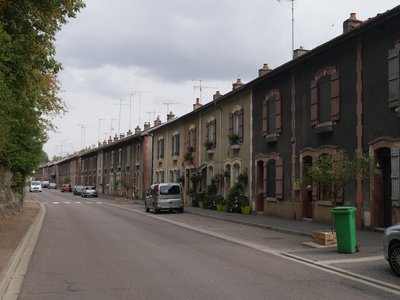
Les cités ouvrières à Brousseval - Amis saint Colomban HistoricalThe Brousseval Foundry
In 1853 the ore from the Haut-Marne was processed in 211 installations. The iron ore has an iron content of 20 to 45%. The driving force of the water and the wood of the Der forests made this region an important producer of cast iron in the 19th century. In the district of Wassy, the most industrialized of the department, there were 44 active mines in 1881. In 1856, the Haute-Marne was the leading department for the production of cast iron and iron, providing 20% of national production, 64 metallurgical sites are still clearly visible in 2010. On the other hand, the department is the undisputed cradle of artistic cast iron with the Val d'Osne and Sommevoire plants.
This industry developed the means of communication in the 19th century in the department with railways and the development of canals of which some remains remain today.
The extinction of the blast furnaces and the attachment of Lorraine, rich in coal, to France after 1918 was a fatal blow to the exploitation. The last mines, those of Pont-Varin, ceased their activity in 1922.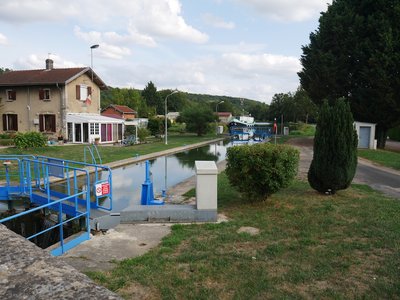
Écluse de Chevillon sur la Via Columbani - Amis saint Colomban PanoramicIron production in Haute-Marne
The tradition of ironworking in Haute-Marne has been attested since prehistoric times thanks to the exploitation of its natural resources: the omnipresent iron ore, charcoal from the abundant forests and the driving force of water.
As the leading metallurgical department in the mid-19th century, Haute-Marne boasts an industrial heritage that can be discovered along this tourist route through its valleys. The Blaise valley, for example, is the oldest and most active in France, and is home to Metallurgic park, the first interpretation centre for ancient and contemporary metallurgy, as well as many witnesses to the metallurgical history of the area.
The Haute-Marne is also the cradle of artistic cast iron with the Val d'Osne, Durenne, Capitain-Gény, Brousseval and the Saint-Dizier Foundries, companies that produced between 1830 and 1930 statues, fountains, vases and decorative elements in cast iron that are found throughout France and the world.
Paris is the showcase of their know-how, notably with Guimard's Art Nouveau metro entrances and Wallace fountains. The pedestrian of Paris, the one who takes the time to stroll on the bridges, the one who goes from Saint-Germain to Réaumur in the 16th arrondissement at the Porte de la Chapelle, constantly encounters cast iron.
The canals were built to export the production of the Haute-Marne, the canal from Champagne to Burgundy is an illustration of this.
Description
In Wassy, cross the church square in the direction of the Dome Tower.
- Turn left on rue du Général de France then rue Mauljean.
- You arrive in Brousseval by the rue du Général De Gaulle, turn second street on the left, place de Mairie. Pass in front of the church, go along the cemetery rue du Blancheron.
- Continue on rue du Honchery to leave the town, turn left on the path going along the woods and the fields of crops. After 2,3km turn first right towards Valleret D184a.
- At the exit of Valleret, turn left onto the D184 towards Sommancourt.
- Entering Sommencourt, take the first left and then right on the D179.
- In Maizières by taking the first left and then left again at the exit of Maizières D180 straight ahead near Rachecourt-sur-Marne.
- Pass under the RN 67 and after 3.6km on the D180 turn right onto the D9 towards Rachecourt-sur-Marne.
- Avenue de Wassy then turn right, avenue de Belgique.
- On the left, avenue de la Marne cross the Marne river you arrive at place de la Gare in Chevillon.
- Departure : Notre-Dame Church, 7 Rue Léon Maitrot, 52 550 Wassy
- Arrival : Old train station of Chevillon, 2 place de la gare, 52 170 Chevillon
- Towns crossed : Grand Est
Altimetric profile
Transport
Report a problem or an error
If you have found an error on this page or if you have noticed any problems during your hike, please report them to us here:
Close by3
- Accommodation



